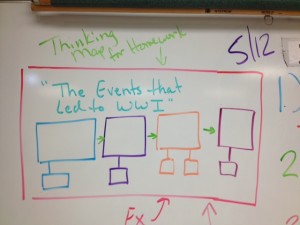Good afternoon! Today we finished Chapter 35 Section 4 covering the fall of the Berlin Wall and the struggles Yugoslavia and Romania experienced in their quest for democracy in a post communist world. Section 4 also signifies a special moment as it was our last set of notes for the 2013-2014 school year. When I think about completing the last set of notes for the year it reminds me of the banner famously hanging behind former President George Bush reading “Mission Accomplished”. Tuesday May 3rd we will be taking out quiz on chapter 35 and then all that’s left is the final exam! Were almost there!!
Here’s what we did today:
Friday-5/30/13:
o Bell Work-1. How did Solidarity affect Communist Rule in Russia? 2. What effect did reunification have on Germany’s international role? 3. What was the main cause of the break up of Czechoslovakia?
o Attendance- While Class is Doing Bell Work
o Video-Berlin Wall (20 min)
o Student Led Notes-Chapter 35-Section 4-Changes in Central and Eastern Europe
o Study Guide Time-Chapter 35-Struggles for Democracy
Supplemental Material: Chapter 35 Section 4-Guided Notes and Struggles for Democracy-PPT
Chapter 35 Section 4-Guided Notes
Chapter 35-Section 4-Guided Notes
Struggles for Democracy-PPT
Struggles for Democracy Struggles for Democracy
